6 Superstar Golf Swings To Study: Learn To Bomb It Like Bryson, Rip it Like Rory And Save Par Like Scheffler
Most amateur golfers would benefit from studying the golf swing of a top player in the game, so to make it simpler we asked our expert to help you get started


Tom Motley
You should never miss an opportunity to watch the world’s best golfers in action, especially as we are blessed with the generational talents like Scheffler and McIlroy to marvel at throughout the season. Every time we tune in, there’s a chance for us to learn something and maybe apply it to our own golf games.
Of course, there are some moves and swings that I might not necessarily recommend every golfer tries to replicate, especially those who maybe lack a bit of flexibility or who don’t have a lot of time to work on their games. Bryson DeChambeau is someone who springs to mind here, a player who shaped his game on 'The Golfing Machine', a book that gets a little technical in places.
However, after studying the games of each of the six big names featured in this article – even DeChambeau’s pretty unconventional swing – I am certain there is something that you can take away from each and use to improve various aspects of your own game from tee to green.
Of course, it does help if you can also put in the hours out on the range or work out in the gym, but I believe you can also make significant improvements by simply taking on board our expert tips from this unmissable opportunity to learn from the best...
Learn From The Best: Six Superstar Swings To Study

Tom Motley has been a PGA professional since 2005. He offers a high level of coaching, utilising the best possible coaching technology eg Swing Catalyst with pressure plates, TrackMan 4 along with a vast array of training aids. Tom continually develops his skills through spending time with some of the best coaches across the globe.
Bryson DeChambeau: Driving Distance
DeChambeau, as we know, has never been conventional; he likes everything to be quite upright and to swing his hands and arms on one single plane. For most club golfers looking to create more power, what you can really learn from the American is how he makes a full body turn.
In the image below, note how he has turned his hips at the top of the backswing and increased a little bit of the flex in his lead knee. You can also see how his lead heel is slightly off the ground at the top. When that heel comes back down when starting the downswing, and he ‘re-squats’, he is really compressing into the ground to generate force.
Prior to impact you’ll see him backing up a bit, with the handle almost being pulled up through his shoulder and lead arm to really catapult that clubhead.
Get the Golf Monthly Newsletter
Subscribe to the Golf Monthly newsletter to stay up to date with all the latest tour news, equipment news, reviews, head-to-heads and buyer’s guides from our team of experienced experts.
Increasing speed
Try and accelerate the clubhead from the start of the downswing as fast as possible by increasing your hand and arm speed. This is a little controversial and may not work for everyone, but I find a lot of golfers I teach – especially those who struggle to compress the ball – end up creating a much better impact position, with the hands a little bit further forward.
Work out how far you hit your driver on average, as this will give you a great starting point so that you can track your progress each time you head to the range.
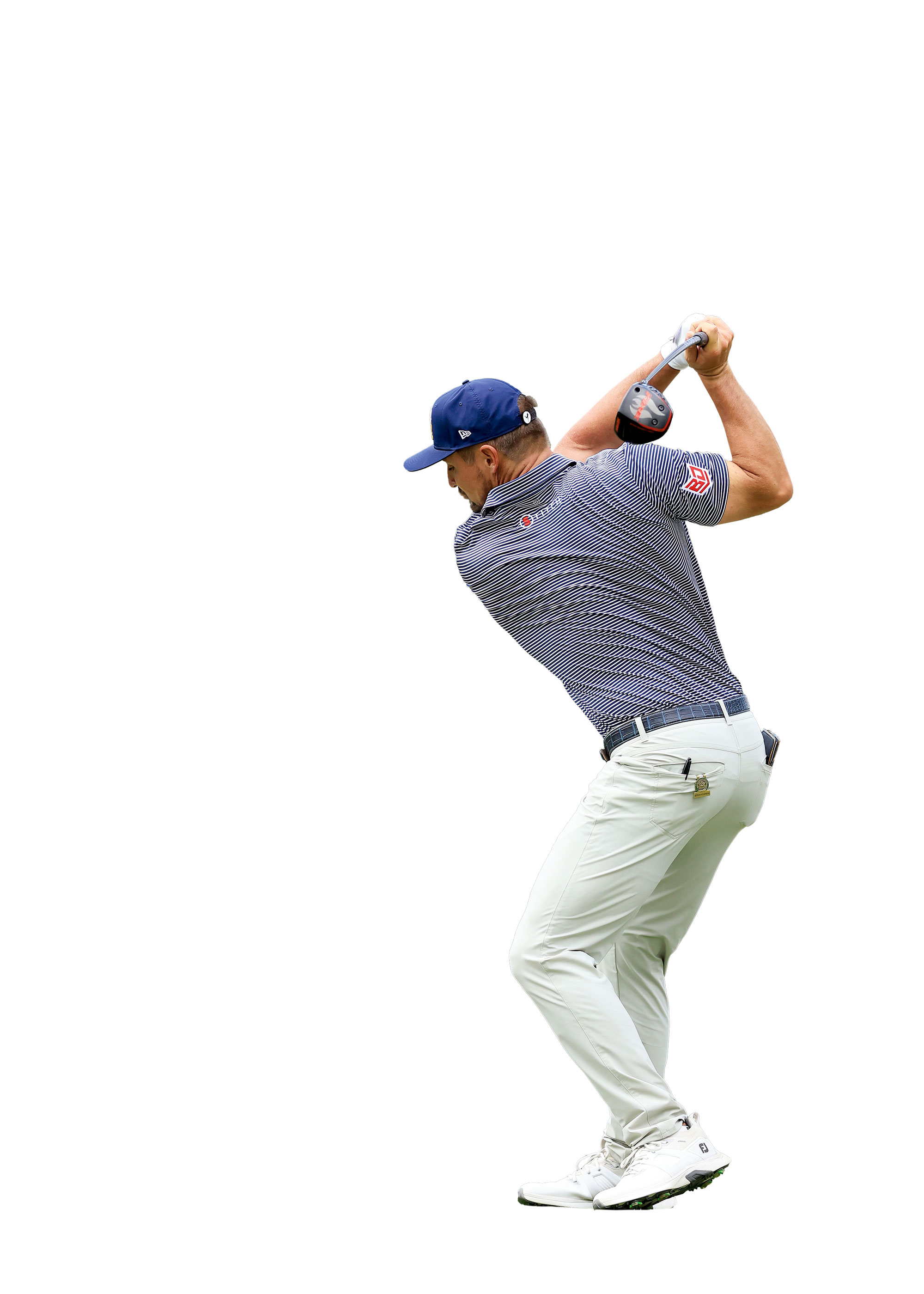
Tommy Fleetwood: Driving Accuracy
Fleetwood has done a lot of work in the past with Alan Thompson and I know one of his main coaching philosophies focuses on stability in the lower half. One of the reasons why Fleetwood is so accurate is that he can create a lot of width while staying stable.
Think of it like this: the lower half supports you; the upper half pivots; and the arms remain nice and connected to that pivot. A lot of club golfers tend to get narrow, loose and disconnected in their lower half and this leads to wayward hitting.
Staying stable
If you tend to lose your balance after you make a driver swing, try hitting balls by going from three-quarters back to three-quarters through. Do so with the intent of feeling no wrist hinge; there will be some but I want you to focus on that sensation of keeping the arms and the chest wide during rotation. I find that this helps a lot of wayward players to just let their weight transfer naturally... and be more Tommy!
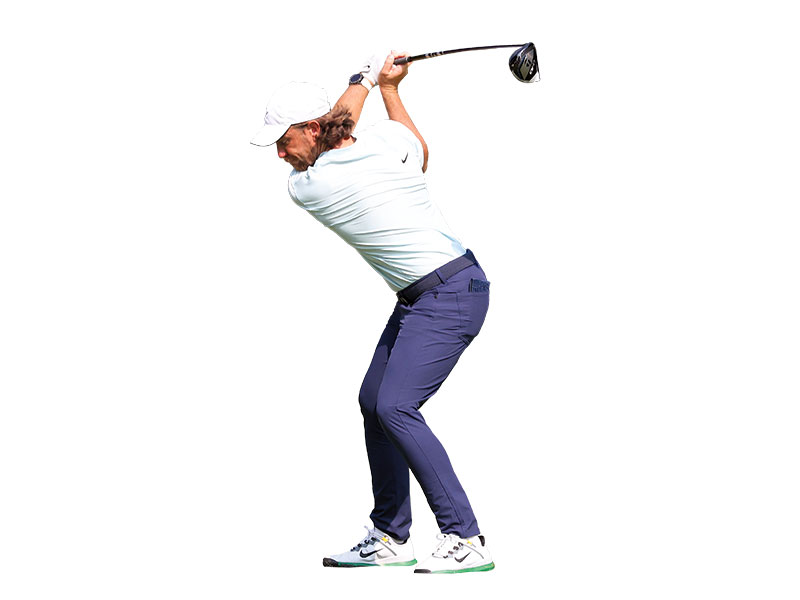
Rory McIlroy: Iron Play
It never ceases to amaze me how far PGA Tour players can hit their irons shots, and Rory is certainly one of the longest. One of the keys to McIlroy’s excellent iron play is how his hands and clubhead work together – the clubhead is very stable and there’s minimal manipulation before, during and beyond impact. In the image below, if you were to draw a line from the clubface through his hands to the centre of his sternum, they’re all matching beautifully. His hands and arms are working in concentric circles, the result of which is a well-compressed strike.
A post shared by Golf Monthly (@golfmonthly)
A photo posted by on
Pure strikes
This range drill is one of my favourites. Draw a line perpendicular to your target line on the range mat (you can use foam instead) or score a line into the grass with a tee. Then, put a ball on the line, set up as normal and try to hit ten balls in a row where your mark/divot is past the line.
Work up from half to full swings, and ignore where the ball goes. This is a super drill to try if you’re hitting your irons fat or thin, as it gets you focused on the strike. Interestingly, McIlroy has removed the outcome (ball flight) recently to focus on neutralising his flight. He spent a few weeks just hitting balls into a net. Sometimes removing the outcome or target can improve your focus on what you’re trying to achieve on the technical side.
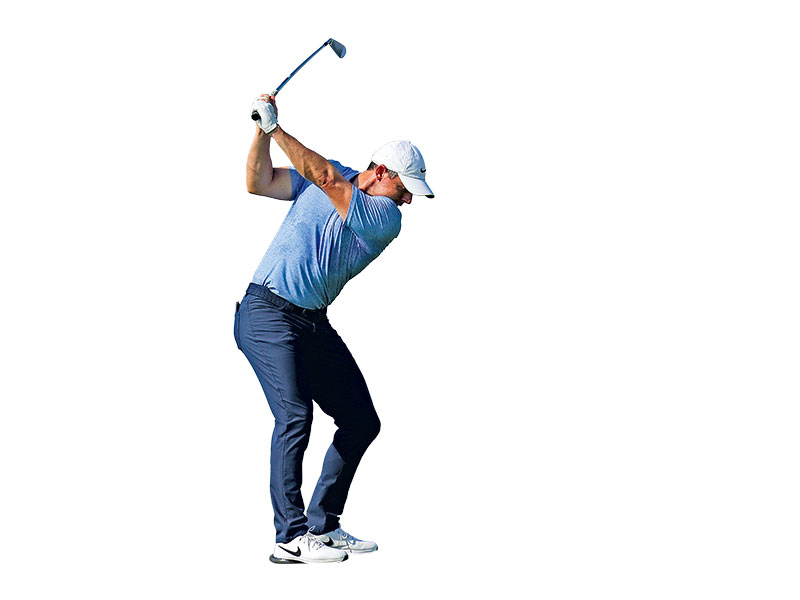
Aaron Rai: Wedge Play
Rai controls the loft beautifully by keeping his chest and arms working together with just a little bit of handle lean. His hands are always slightly ahead of the clubhead from delivery through to post-impact. To put it another way, his lead wrist is slightly ahead of the clubhead at impact, but he’s driving through so it’s almost like a punch through the ball.
I like the footwork here, too. Both feet are well grounded and he has stabilised the lower half so he can control the chest, arms and hands together. In the follow-through, you can see he’s kept his arms nice and long and connected to the body. Note, in the image below, how he keeps that big, long arc through the ball and into the follow-through. This helps him to maintain the loft on the club and thus control the distance and direction of his wedge shots.
The flying wedge
This drill is called the ‘flying wedge’ as you’re trying to maintain the angle between your trail forearm and the shaft – this is your ‘wedge’. Set up with the handle quite far forward and the ball just left of centre, with your weight 60/40 in favour of the lead side. Take half swings and focus on finishing with the arms nice and straight while trying to maintain the wrist angles throughout the shot. It’s an effective drill to help you deliver consistent loft.
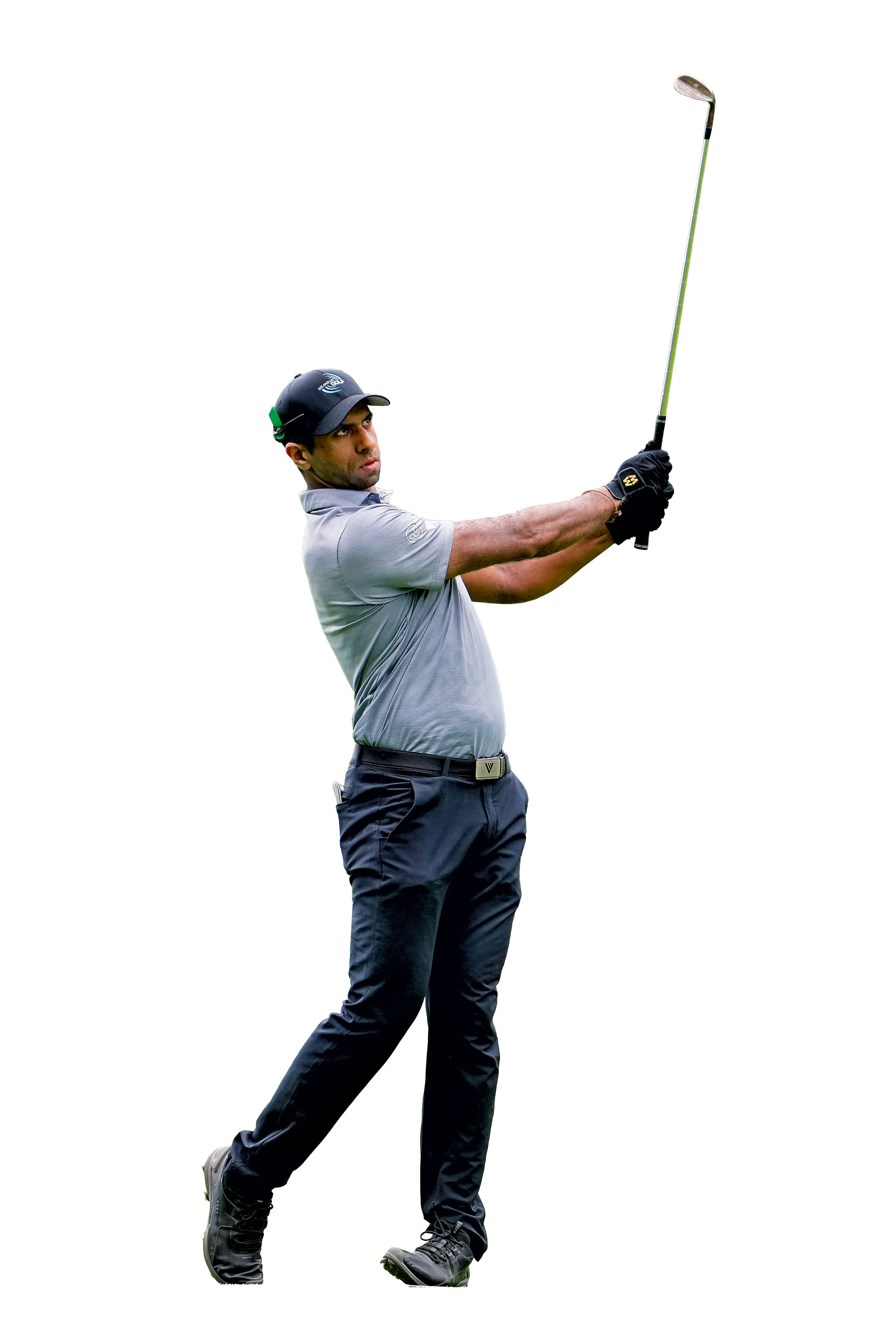
Jason Day: Putting
The Australian is very much into visualising. Yes, he works on the technical side, but he does that away from the course; on it, his first focus is on the speed he wants to strike the putt, and then he’ll zone in on the intended start line and hone in on reading the green. As for the stroke, I tell my students to rock the arms. If I say “rock the shoulders”, I see quite a bit of head bobbing.
On mid-length putts, Day will walk along the line of the putt, trying to get a feel for where the humps and breaks are. He also stands behind the ball and rehearses a few strokes in a different direction (off to the side). Give it a go, because it can really help you to feel the pace of the stroke that’s required.
Finding the perfect set-up
You can eradicate so many faults by getting the set-up fundamentals right, which obviously someone like Day will stay on top of. Grip your putter as normal and lift it up in front of you in line with your sternum. Draw your elbows towards you until they’re one or two inches away from your rib cage, then tilt the pelvis forwards to take your set-up.
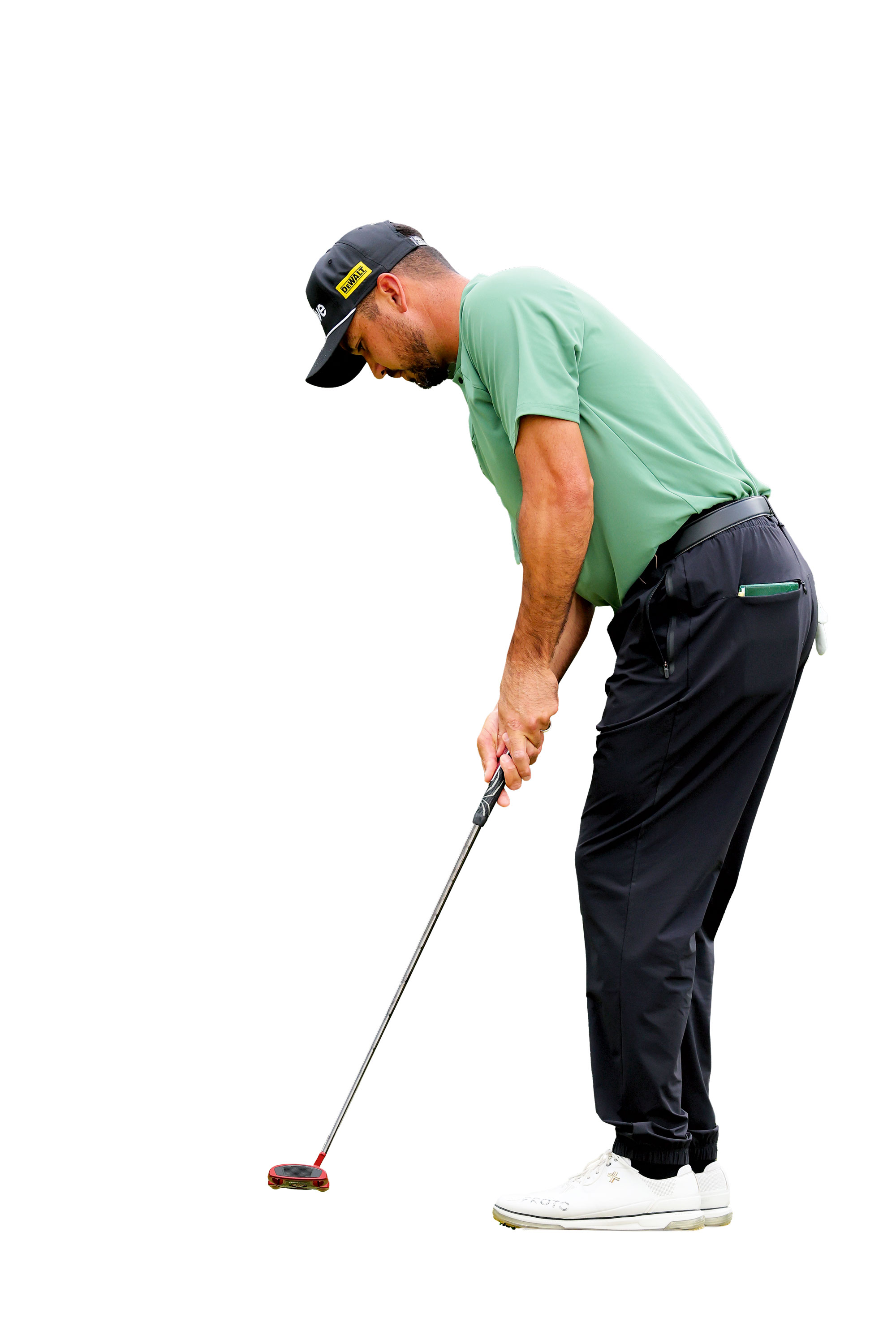
Scottie Scheffler: Short Game
What makes Scheffler’s short game great? For me, it’s not anything out of the ordinary in terms of technique – it’s more how he sees shots. The best chippers see the flight and they see where they want to land the ball. It’s then a case of controlling the loft for the desired shot, which the World No.1 does time and time again.
If you can learn anything from someone like Scheffler – other than good fundamentals – it is how he visualises the route he wants the ball to take to the hole. This is what separates the good short-game players from the greats, along with knowing where they want to leave the ball to make their putt as easy as possible. It sounds so simple but it’s something that a lot of weekend players just wouldn’t think of.
Using loft
I’m a big believer in learning how to play with loft. Pick three easy chips to three flags and play four balls to each using four different clubs. Use a lofted club first and work backwards. There may be a time for the bump-and-run but you can’t rely on one shot – you need to be able to use loft. This drill will help you visualise where you need to land each one and give you a better variety of shots.
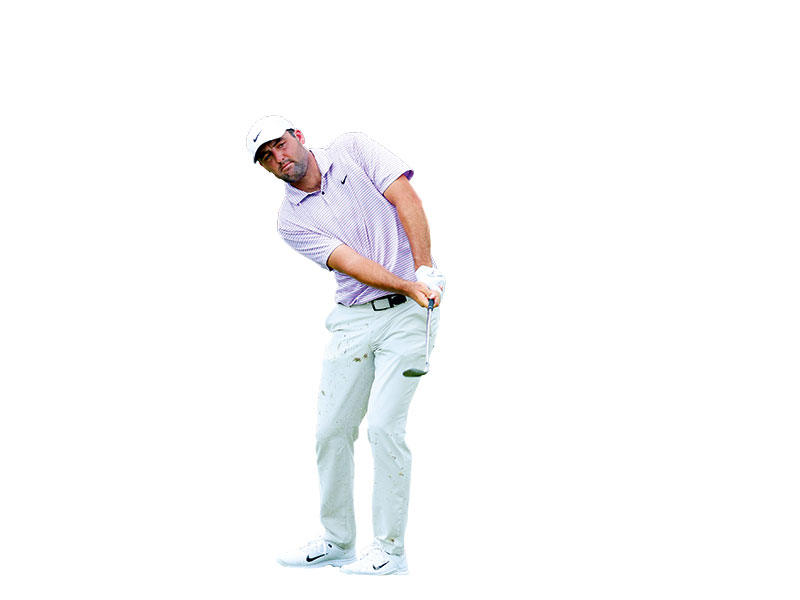
Where Can I Find More Top Tour Pro Golf Tips?
At Golf Monthly, we are all about helping amateur golfers to play better golf – so why not check out some of our expert tips from top players and legends of the game...

Michael has been with Golf Monthly since 2008. A multimedia journalist, he has also worked for The Football Association, where he created content to support the England football team, The FA Cup, London 2012, and FA Women's Super League. As content editor at Foremost Golf, Michael worked closely with golf's biggest equipment manufacturers and has developed an in-depth knowledge of this side of the industry. He's a regular contributor, covering instruction, equipment, travel and feature content. Michael has interviewed many of the game's biggest stars, including seven World No.1s, and has attended and reported on numerous Major Championships and Ryder Cups around the world. He's a member of Formby Golf Club in Merseyside, UK.
- Tom MotleyTop 50 Coach
-
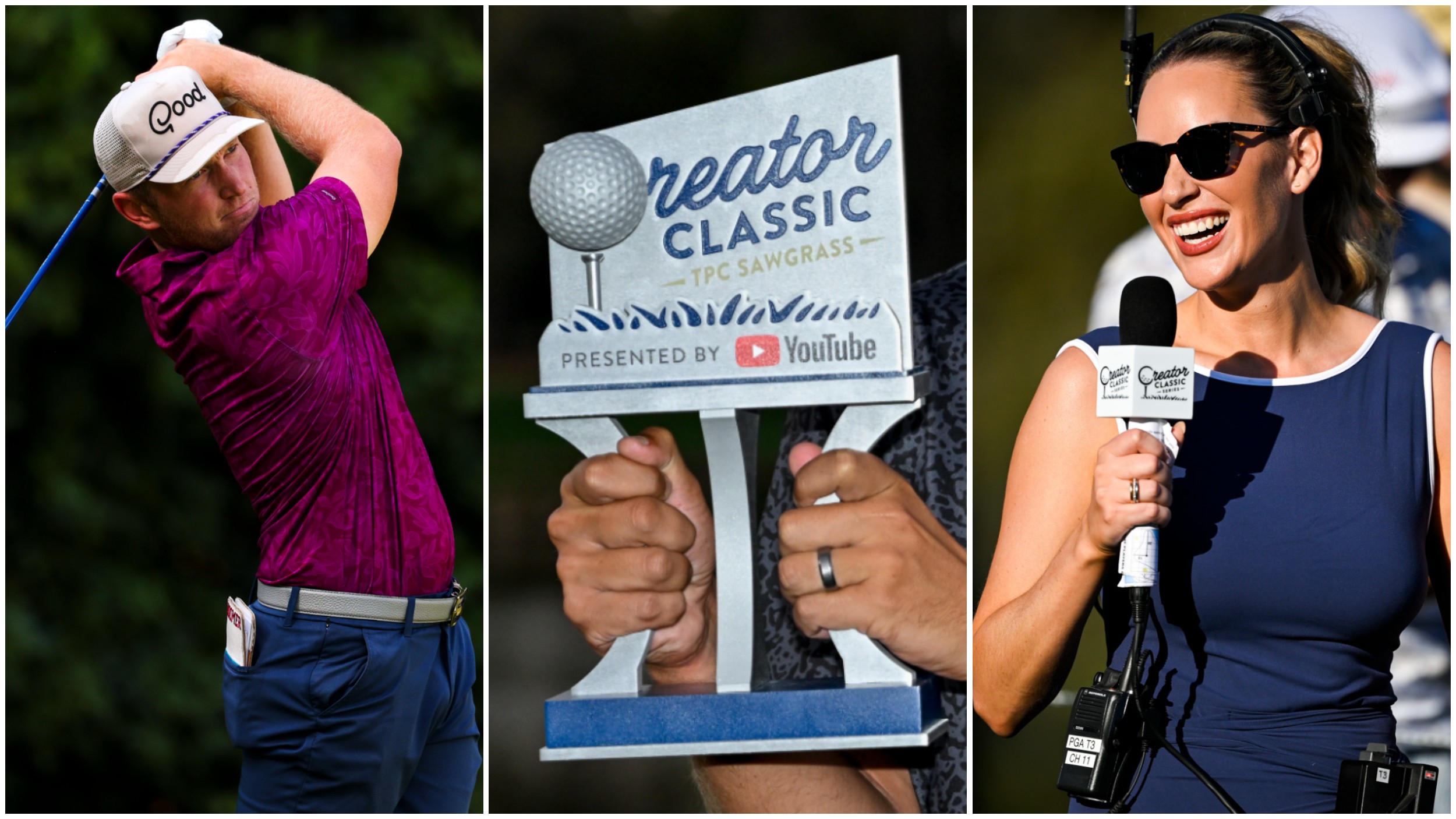 PGA Tour Truist Championship Creator Classic Line-Up And Format Revealed
PGA Tour Truist Championship Creator Classic Line-Up And Format RevealedThe PGA Tour has announced the line-up for the second Creator Classic ahead of the Truist Championship - with YouTubers from outside golf taking on the challenge
By Paul Higham
-
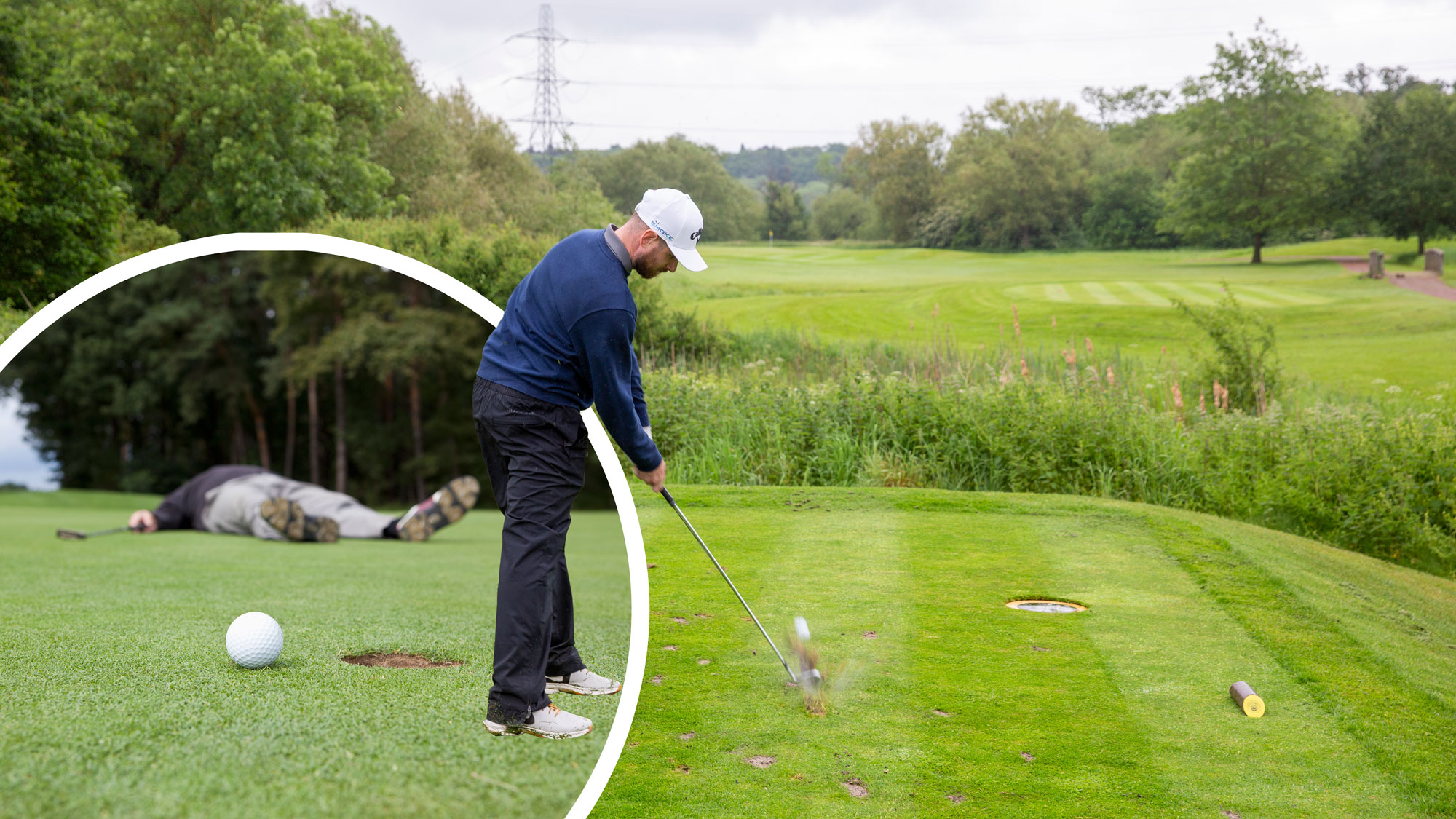 Are You Tired Of Your High-Handicap Golfer Status? These 4 Substantiated Tips Are Your Salvation
Are You Tired Of Your High-Handicap Golfer Status? These 4 Substantiated Tips Are Your SalvationBeing a high-handicap golfer is not easy, with consistency being difficult to establish and progress hard to come by... until you try these four simple tips!
By Barry Plummer
-
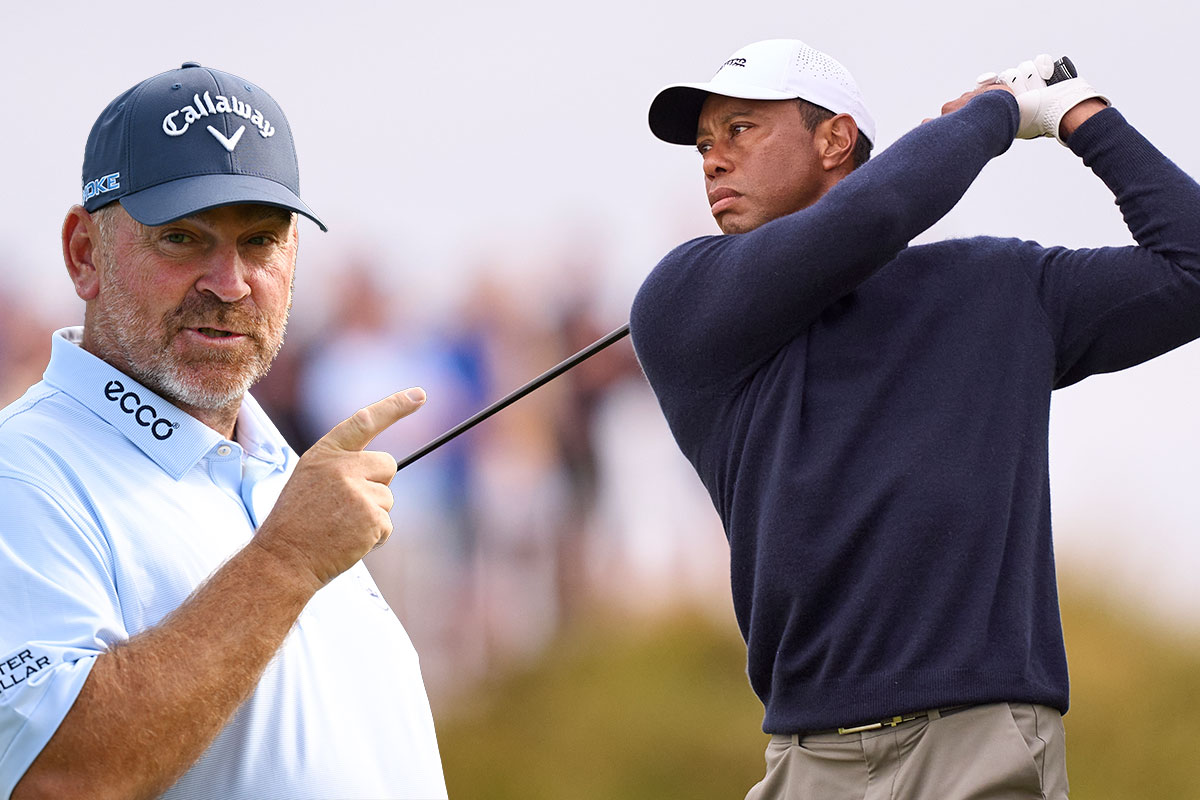 Thomas Bjorn Shares An Invaluable Scoring Tip He Learned From Tiger Woods
Thomas Bjorn Shares An Invaluable Scoring Tip He Learned From Tiger WoodsThomas Bjorn shares a superb tee to green masterclass, including some invaluable scoring advice from Tiger Woods, in a bid to help you improve on the course
By Barry Plummer
-
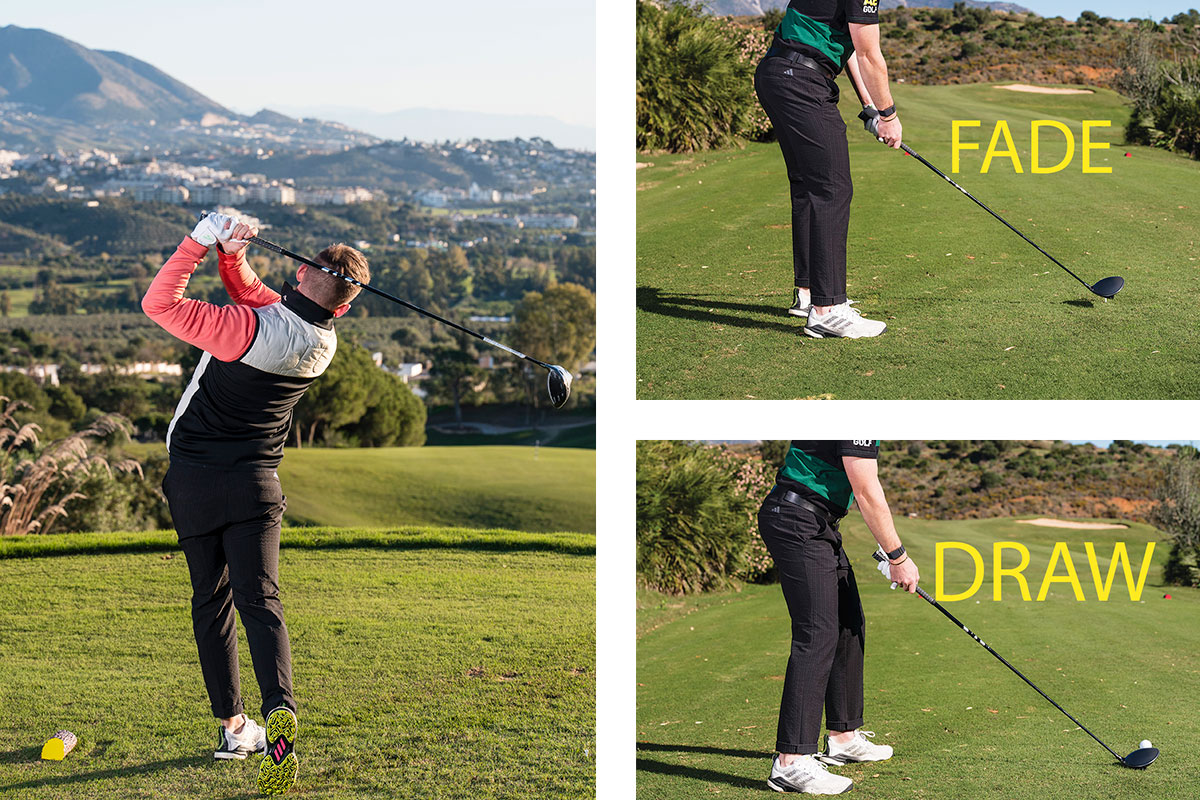 I Had No Idea It Was This Easy To Hit Draws And Fades... You Have To Try This Foolproof Formula Now
I Had No Idea It Was This Easy To Hit Draws And Fades... You Have To Try This Foolproof Formula NowWhen Top 50 Coach Alex Elliott shared this simple formula with me, I could not believe how easy it was to draw and fade the golf ball... you have to try it!
By Barry Plummer
-
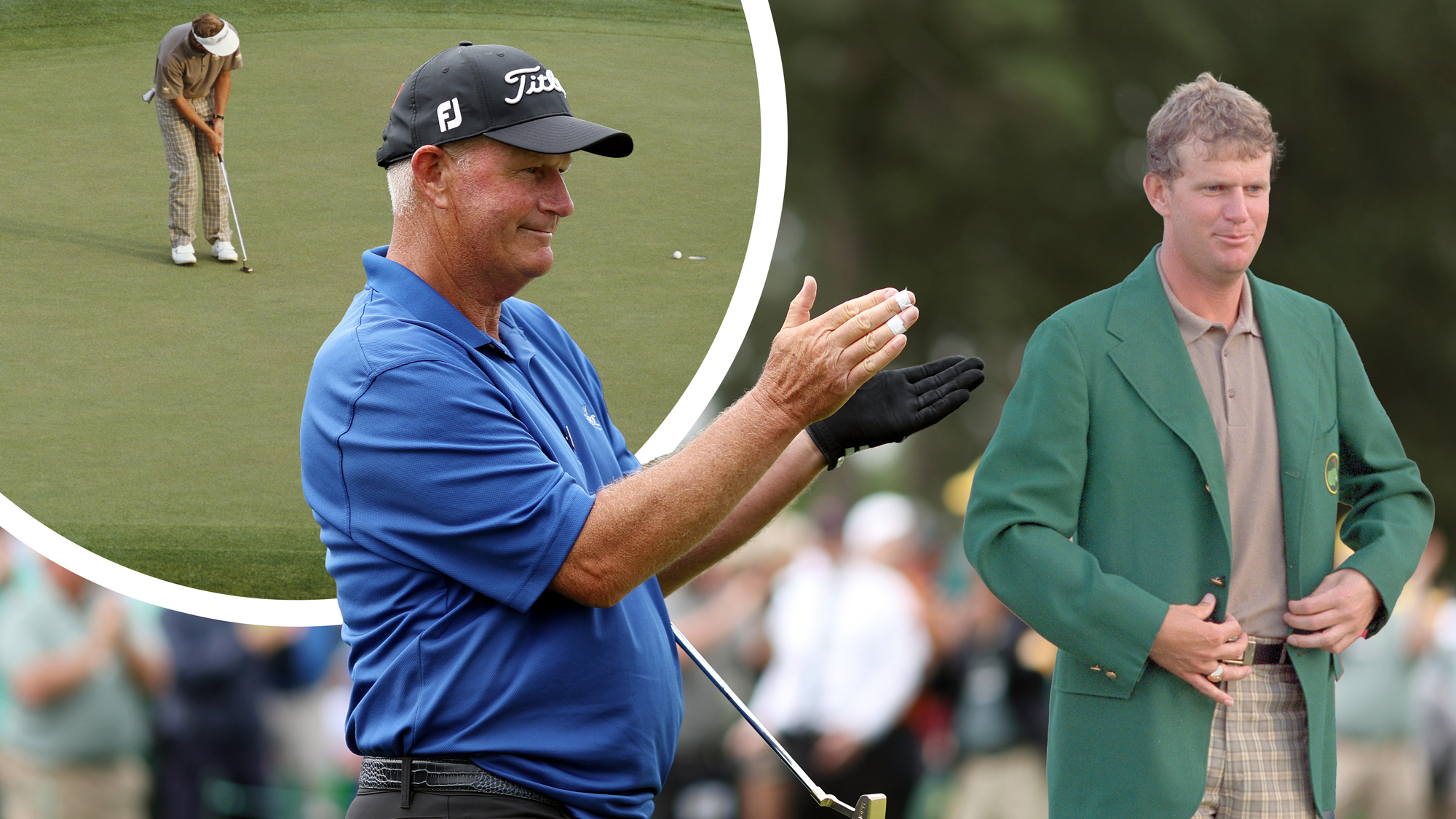 Sandy Lyle Shared 3 Top Tips With Us Prior To Winning The Masters in 1988... And They Could Still Save You Shots 37 Years Later
Sandy Lyle Shared 3 Top Tips With Us Prior To Winning The Masters in 1988... And They Could Still Save You Shots 37 Years LaterThe 1988 Masters Champion shared his expert tips in the January 1988 issue of Golf Monthly, but they are still absolute gems for amateur golfers to this day...
By Barry Plummer
-
 Are You More Accurate Than The Average Amateur Golfer? Peter Finch Can Help You Hit More Fairways In 2025
Are You More Accurate Than The Average Amateur Golfer? Peter Finch Can Help You Hit More Fairways In 2025There is no better feeling than striping one down the middle of the fairway, but many amateurs struggle with accuracy. Peter Finch has four pro tips to help...
By Barry Plummer
-
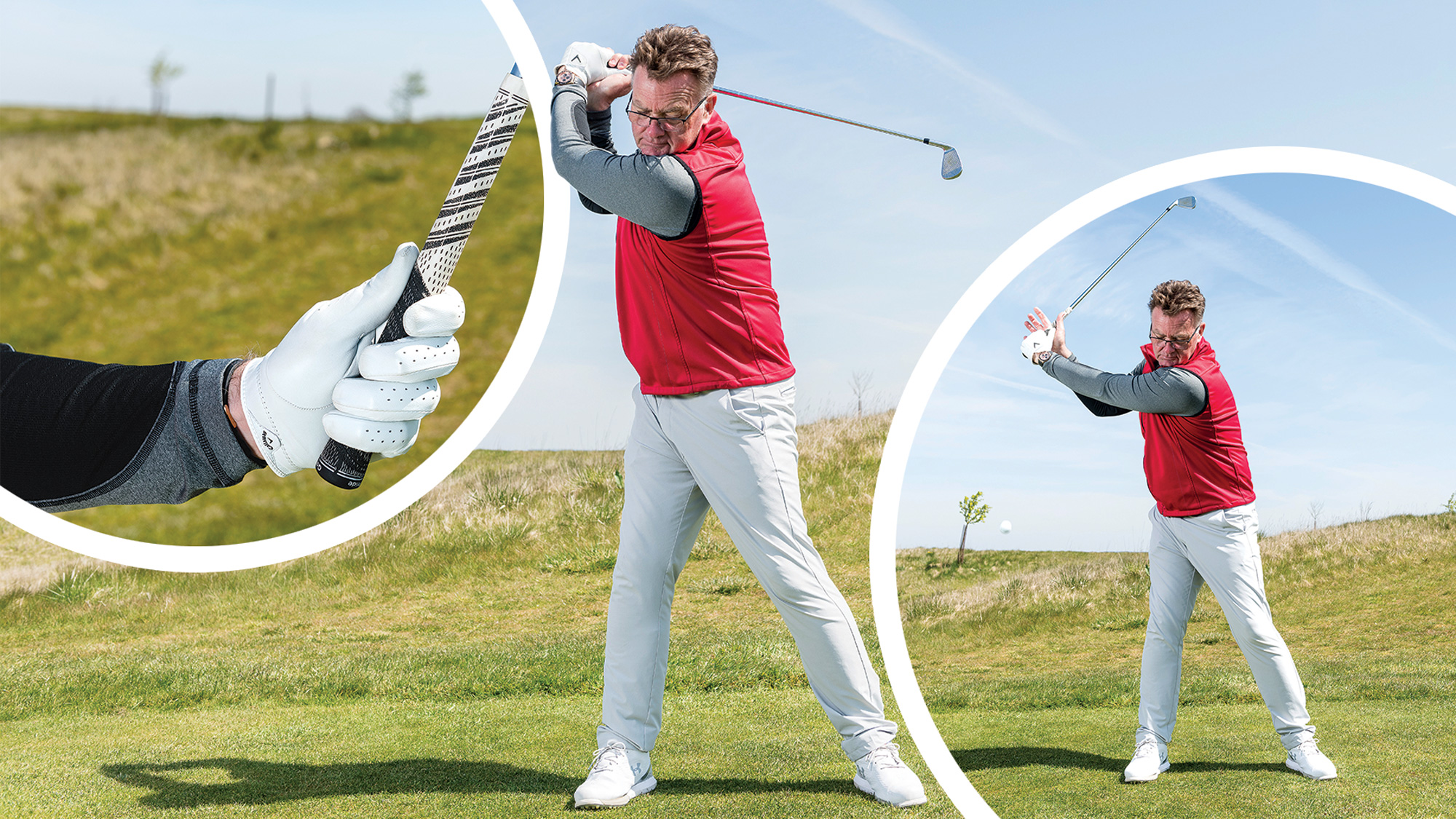 Are You A Victim Of This Destructive Golf Swing Fault? Let Me Help You Fix It Before You Tee It Up This Weekend
Are You A Victim Of This Destructive Golf Swing Fault? Let Me Help You Fix It Before You Tee It Up This WeekendAn overswing in golf is a destructive habit which can cost us precious shots on the golf course, but PGA Pro John Jacobs has a quick fix to get us game ready...
By Barry Plummer
-
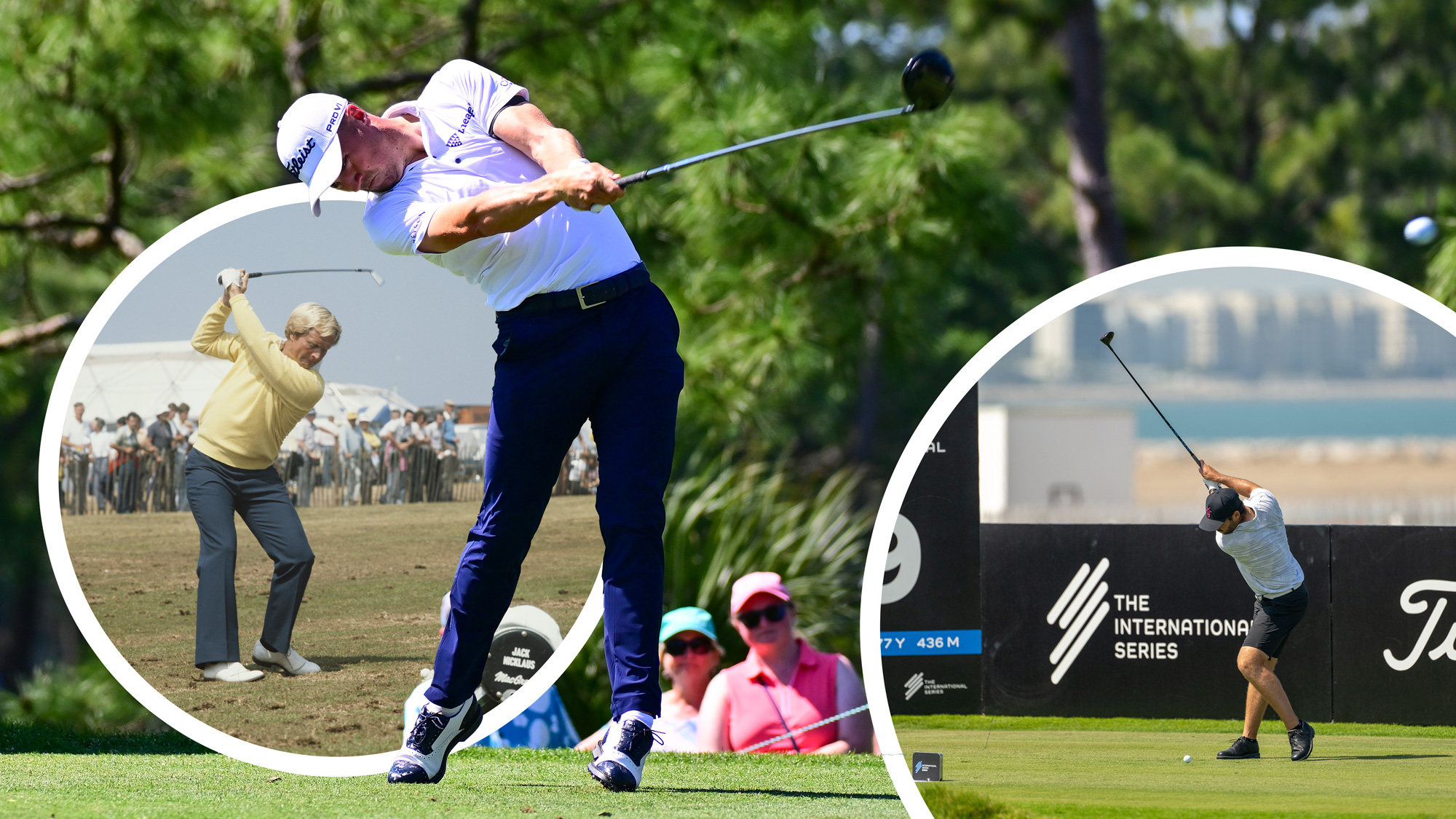 Do You Struggle With Distance Off The Tee? Try This Quick Fix To Make 2025 Your Biggest Golf Season Yet
Do You Struggle With Distance Off The Tee? Try This Quick Fix To Make 2025 Your Biggest Golf Season YetStruggling with distance off the tee could be a major reason why your handicap isn't coming down or your scores aren't improving, but our quick fix can help...
By Barry Plummer
-
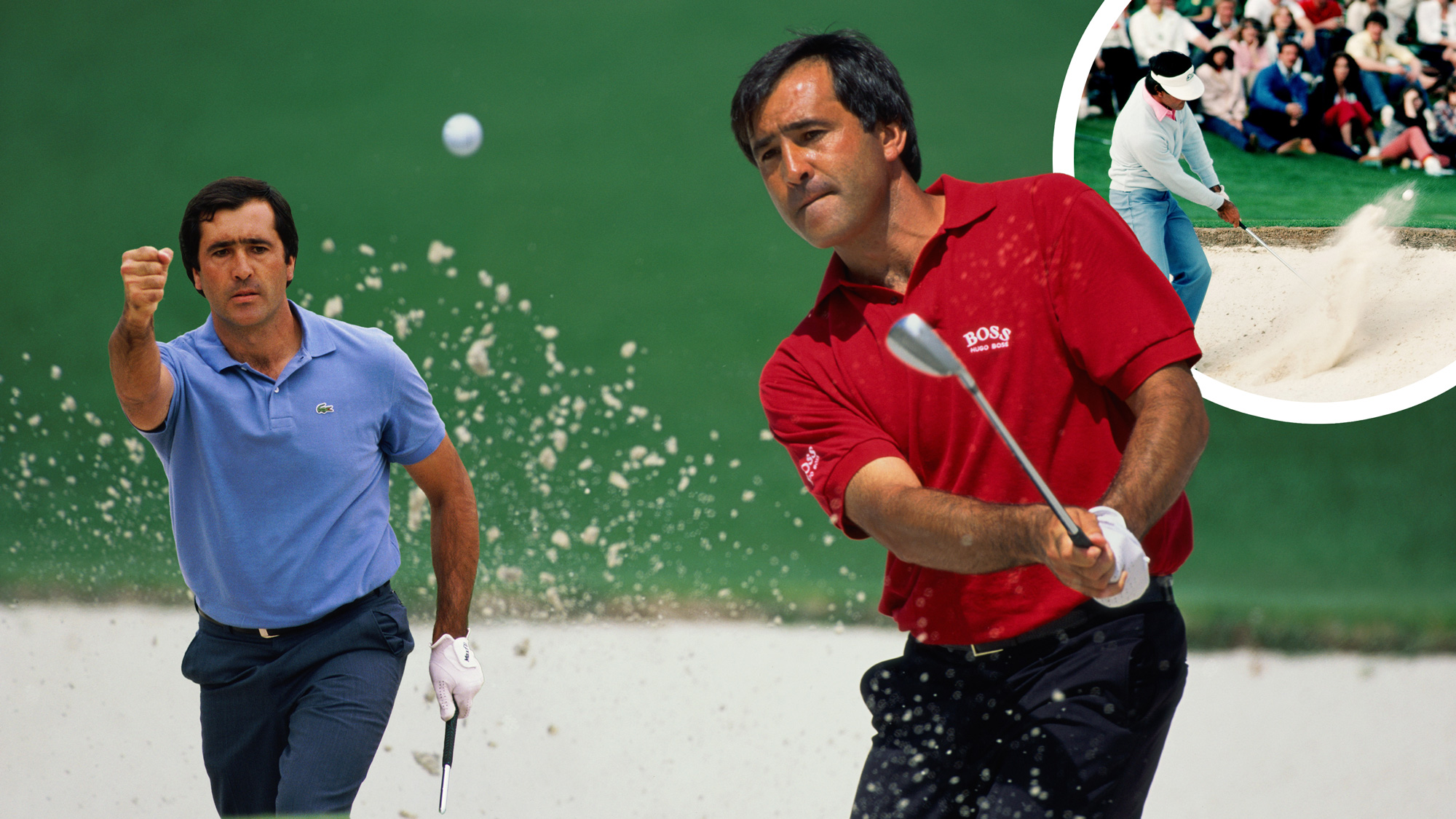 Seve's 'Lost' Bunker Lesson: Master Slopes And Transform Your Short Game Today
Seve's 'Lost' Bunker Lesson: Master Slopes And Transform Your Short Game TodaySeve's forgotten bunker lesson, from Golf Monthly's August 1983 issue, could hold the secret to better bunker play and supercharging your short game this season
By Barry Plummer
-
 Is Your Golf Swing Failing You? This All-Encompassing Drill Can Instantly Save It
Is Your Golf Swing Failing You? This All-Encompassing Drill Can Instantly Save ItAre you struggling with your golf swing? Discover the all-encompassing drill that can fix common swing faults and restore your game. Get back on track today!
By Tom Motley